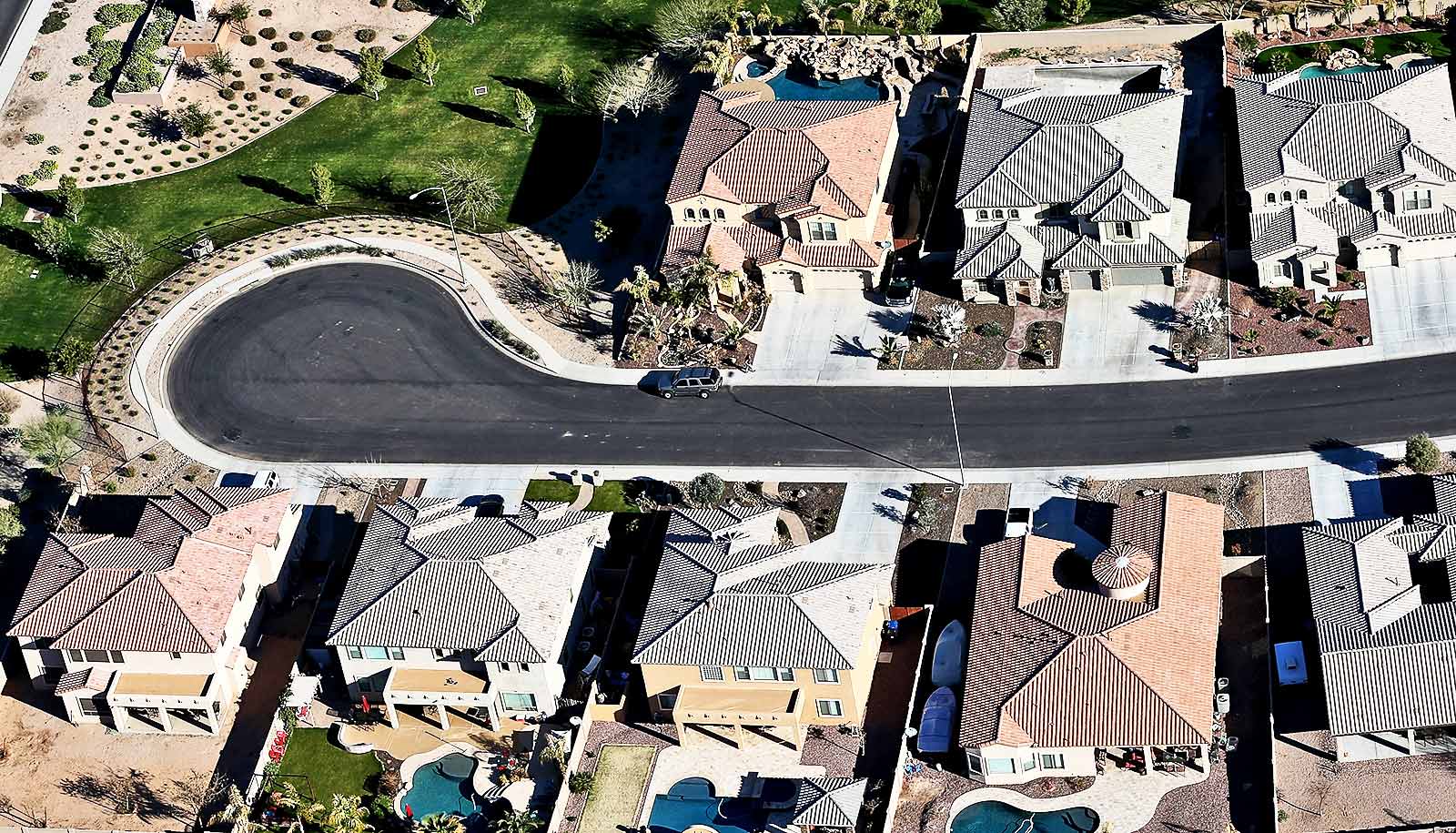A community’s built environment—in particular, design factors such as vegetated land cover, housing density, and lot size—closely relates to how much water single-family residences use, according to a new study.
The findings can provide key data for city planners and water managers looking to develop sustainable water use strategies for their communities, researchers suggest in a new paper in the Journal of the American Planning Association.
What’s the built environment?
Philip Stoker, assistant professor in the College of Architecture, Planning, and Landscape Architecture at the University of Arizona, defines the built environment as “the way cities take shape—what the materials are made out of, what the land cover consists of, the arrangement of buildings, and what kind of buildings are there.”
The team obtained single-family residential property water-use records from 2011 in Phoenix; Salt Lake City; Portland, Oregon; and Austin, Texas. They estimated models for both annual water use and for during the summer months of June through August.
They said they selected those cities because they each offer insights relative to the impacts of both climate change and rapid urban population growth on residential water consumption. Single-family residences are the principal form of residential development in each city and make up a large share of overall water use.
“As cities, especially in the Western US, continue to grow, planners need to think about their water supplies moving into the future,” says Stoker. “With this study, we wanted to give them information to develop a strategy. We wanted to show how the planning and design of cities influence how water is used.”
5 factors in 5 cities
The researchers examined the influence of five built environment measures on single-family residential water use: housing density, tax assessed value, lot size, vegetative cover, and the age of housing. They found in each city, the built environment poses a stronger influence on urban water use than previously reported.
“In Austin, for example, we were able to explain 85% of the variation in water use among Austin neighborhoods with just the five measures of the built environment,” Stoker says.
Some measures influenced water use across the board. The researchers found increased vegetated cover, combined with larger lots, in newer homes, with higher assessed values, linked to higher water use in each city.
Vegetated cover associated with an increased water demand more than any other built-environment variable in the drier cities. The effect was greatest in Salt Lake City, where each 1% increase in average vegetated surface was tied to a 0.48% increase in annual water use and a 0.7% increase in summer use.
Higher housing density linked with lower water use in every city except Salt Lake City, where the measure was not statistically significant.
Big lots and new houses
The researchers had expected lot size to consistently predict water use. However, those findings varied across the four cities.
In Austin and Portland, larger lots associated with higher water use. In Austin, a 1% increase in lot size associated with an approximate 0.32% increase in summer water use. Lot size was not significantly associated with annual or summer water use in Salt Lake City, and there was an inverse relationship in Phoenix, with larger lot size tied to lower water use.
Stoker says he was also surprised by the findings on the age of housing, as the expectation was that newer housing would use less water because of higher-efficiency appliances. However, the opposite was true in Austin, Portland, and Salt Lake City. The association was strongest in Salt Lake City, where, for every 1% increase in housing age there was an approximate 0.31% decrease in annual water use and about 0.33% decrease in summer use.
City planners and water managers can use the data to work together on developing zoning ordinances, form-based codes, and landscaping ordinances that can lead to more efficient water usage, Stoker says.
Regulations could, for example, specify smaller lot sizes for future developments, or call for reduced or different types of vegetated cover on single-family properties. In implementing these regulations, Stoker says, city leaders must balance factors such as whether the water-use reduction outweighs the benefit vegetated land has on temperature-cooling efforts.
Additional coauthors are from Arizona State University and Portland State University.
Source: Andy Ober for the University of Arizona



